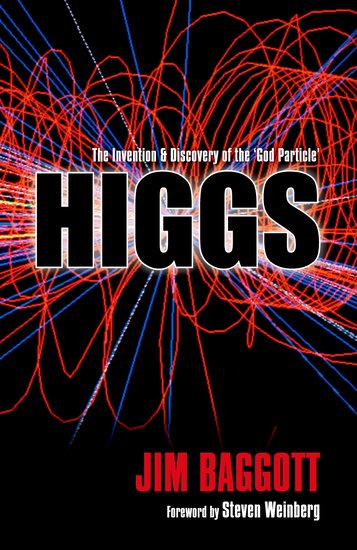On 4 July 2012, scientists at CERN’s Large Hadron Collider (LHC) facility in Geneva announced the discovery of a new elementary particle they believe is consistent with the long-sought Higgs boson, or ‘god particle’. Our understanding of the fundamental nature of matter — everything in our visible universe and everything we are — is about to take a giant leap forward. So, what is the Higgs boson and why is it so important? What role does it play in the structure of material substance? We’re celebrating the release of Higgs: The Invention and Discovery of the ‘God Particle’ with a series of posts by science writer Jim Baggott over the next week to explain some of the mysteries of the Higgs.
By Jim Baggott
We know that the physical universe is constructed from elementary matter particles (such as electrons and quarks) and the particles that transmit forces between them (such as photons). Matter particles have physical characteristics that we classify as fermions. Force particles are bosons.
In quantum field theory, these particles are represented in terms of invisible energy ‘fields’ that extend through space. Think of your childhood experiences playing with magnets. As you push the north poles of two bar magnets together, you feel the resistance between them grow in strength. This is the result of the interaction of two invisible, but nevertheless very real, magnetic fields. The force of resistance you experience as you push the magnets together is carried by invisible (or ‘virtual’) photons passing between them.
Matter and force particles are then interpreted as fundamental disturbances of these different kinds of fields. We say that these disturbances are the ‘quanta’ of the fields. The electron is the quantum of the electron field. The photon is the quantum of the electromagnetic field, and so on.
In the mid-1960s, quantum field theories were relatively unpopular among theorists. These theories seemed to suggest that force carriers should all be massless particles. This made little sense. Such a conclusion is fine for the photon, which carries the force of electromagnetism and is indeed massless. But it was believed that the carriers of the weak nuclear force, responsible for certain kinds of radioactivity, had to be large, massive particles. Where then did the mass of these particles come from?
In 1964, four research papers appeared proposing a solution. What if, these papers suggested, the universe is pervaded by a different kind of energy field, one that points (it imposes a direction in space) but doesn’t push or pull? Certain kinds of force particle might then interact with this field, thereby gaining mass. Photons would zip through the field, unaffected.
One of these papers, by English theorist Peter Higgs, included a footnote suggesting that such a field could also be expected to have a fundamental disturbance — a quantum of the field. In 1967 Steven Weinberg (and subsequently Abdus Salam) used this mechanism to devise a theory which combined the electromagnetic and weak nuclear forces. Weinberg was able to predict the masses of the carriers of the weak nuclear force: the W and Z bosons. These particles were found at CERN about 16 years later, with masses very close to Weinberg’s original predictions.
By about 1972, the new field was being referred to by most physicists as the Higgs field, and its field quantum was called the Higgs boson. The ‘Higgs mechanism’ became a key ingredient in what was to become known as the standard model of particle physics.
Jim Baggott is author of Higgs: The Invention and Discovery of the ‘God Particle’ and a freelance science writer. He was a lecturer in chemistry at the University of Reading but left to pursue a business career, where he first worked with Shell International Petroleum Company and then as an independent business consultant and trainer. His many books include Atomic: The First War of Physics (Icon, 2009), Beyond Measure: Modern Physics, Philosophy and the Meaning of Quantum Theory (OUP, 2003), A Beginner’s Guide to Reality (Penguin, 2005), and A Quantum Story: A History in 40 Moments (OUP, 2010). Read his previous blog post “Putting the Higgs particle in perspective.”
Subscribe to the OUPblog via email or RSS.
Subscribe to only physics and chemistry articles on the OUPblog via email or RSS.
View more about this book on the ![]()
![]()



[…] is the Higgs boson called the ‘god particle’? permalink buy this book read more Posted on Tuesday, September 4th, 2012 at 4:30 am SHARE: We’re celebrating the […]
[…] over the week to explain some of the mysteries of the Higgs boson. Read the previous posts: “What is the Higgs boson?” and “Why is the Higgs boson called the ‘god […]
[…] over the week to explain some of the mysteries of the Higgs boson. Read the previous posts: “What is the Higgs boson?”, “Why is the Higgs boson called the ‘god particle’?”, and “Is the particle recently […]
[…] over the week to explain some of the mysteries of the Higgs boson. Read the previous posts: “What is the Higgs boson?”, “Why is the Higgs boson called the ‘god particle’?”, “Is the particle recently […]